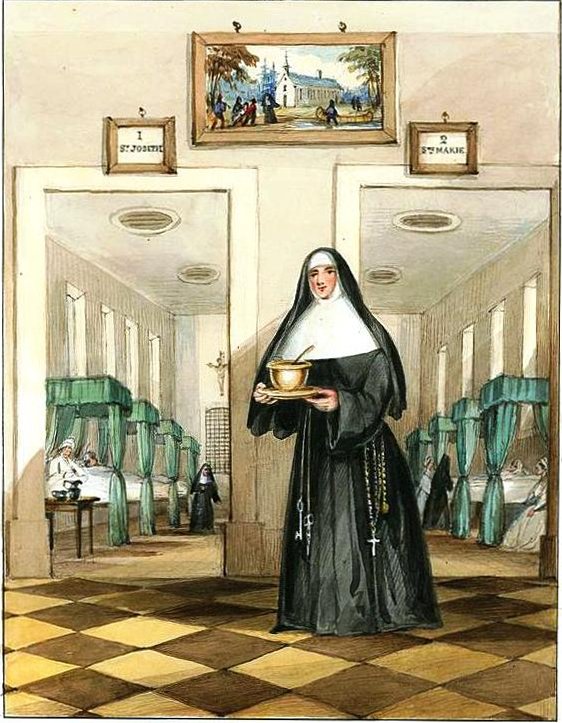The Hôtel-Dieu in New France
"Hôtel-Dieu" translates as "God Hotel", or "Hostel of God". This institution was not an establishment providing accommodation, but rather a hospital. Its name stems from the fact that the Hôtel-Dieu was staffed by nuns. They were there to care for the souls, and not necessarily the bodies, of their patients. In the time of New France, both Québec and Montréal had an Hôtel-Dieu.
Cliquez ici pour la version en français
The Hôtel-Dieu
"Hôtel-Dieu" translates as "God Hotel", or "Hostel of God". This institution was not an establishment providing accommodation, but rather a hospital. Its name stems from the fact that the Hôtel-Dieu was staffed by nuns. They were there to care for the souls, and not necessarily the bodies, of their patients. In the time of New France, both Québec and Montréal had an Hôtel-Dieu.
"Hôtel-Dieu (Québec)", 1639. Drawing by Jacques Viger (Archives de la Ville de Montreal).
"Nuns of the Hôtel-Dieu de Montreal", 1853 artwork by James Duncan (Wikimedia Commons).
The Hôtel-Dieu in Québec
One of the first hospitals established in North America, the Hôtel-Dieu in Québec was founded in 1639. Sent from Dieppe in France, three nuns from the Augustines de la Miséricorde de Jésus were tasked with running the hospital: Marie Guenet de Saint-Ignace, Anne Le Cointre de Saint-Bernard, and Marie Forestier de Saint-Bonaventure. When they arrived, however, construction of the Hôtel-Dieu had not yet been completed. After a short stay in Québec, the nuns set up the first hospital in nearby Sillery, where they treated indigenous people afflicted with smallpox. Facing an ongoing threat of attack by the Iroquois, the nuns left in 1644 and moved to Québec's upper town on Côte du Palais. While their initial focus had been in the treatment (and evangelization) of the indigenous people, they were soon treating an influx of Frenchmen as Québec's population steadily rose.
Details of a painting by Sister Sainte-Marie, "Arrival of the Hospitallers in Quebec", 1922 (Collections du Monastère des Augustines).
"Agreement for the entry of Marguerite Bourdon, daughter of Jean Bourdon, to the convent of La Miséricorde in Quebec (Hôtel-Dieu de Quebec). Marguerite Bourdon dite de Saint-Jean-Baptiste, Augustine hospitalier of the Hôtel-Dieu de Québec, is one of the founders of the General Hospital. Born in Québec on 12 October 1642, she is the daughter of Jean Bourdon, Attorney General of New France, and Jacqueline Potel. She died on 11 October 1706. She became a novice on January 23, 1657. Act of the notary Guillaume Audouart" (Bibliothèque et Archives nationales du Québec).
Marie-Madeleine de Vignerot, duchesse d'Aiguillon (Wikimedia Commons).
In 1646, the building of the Hôtel-Dieu, including the hospital, the main portion of the monastery and the chapel, was finally completed. Construction cost 8,000 livres, a huge sum of money at the time. Most of the expenses were paid by the Duchess of Aiguillon, a French aristocrat and philanthropist. The Duchess also funded expansion projects for the hospital, which were required in 1654 and 1672. In 1654, the hospital consisted of a long and narrow wooden building measuring only 14 feet wide. After the 1672 expansion, the hospital had two patient rooms: one for women and one for men. A few beds, located in a separate room, were reserved for officers and people with more financial means. In total, the hospital had about 50 beds.
This engraving represents the city of Quebec, around 1700, seen from the St-Lawrence. Various important buildings are listed such as the Hôtel Dieu and the gunpowder store. By A. Léo Leymarie (Archives de la Ville de Montréal).
On June 7, 1755, the Hôtel-Dieu was completely gutted by fire. The nuns soon endeavoured to have the hospital rebuilt, obtaining loans where they could. A new monastery was built within a few years, but the hospital was not completely rebuilt until 1825 due to a lack of funds. In the meantime, they converted part of the monastery and other properties they owned into makeshift hospitals. The siege of Québec in 1759 dealt several blows to the nuns. Their monastery was damaged by canon balls. Farm animals they owned were killed, and gristmills on some of their properties were destroyed. Facing financial ruin, the nuns decided to sell much of the land they had acquired. They attempted to make money by offering laundry services to the church and mending services to the locals. They even baked the bread for the seminary.
In 1784, the hospital reopened once again, but in a much smaller capacity. It only had 18 beds. It wasn't until 1816 that a significant expansion began, ending nine years later after many fundraising efforts. By 1826, the hospital had a total of 30 beds and attempted to increase this number every year. It was during this period that the Hôtel-Dieu became a teaching hospital. In 1855, it became associated with the Université Laval's faculty of medicine. The construction of the pavillon d'Aiguillon from 1890 to 1892 brought the total number of beds to 135. Other buildings were added to the hospital complex between 1918 and 1950.
Image Gallery: Hôtel-Dieu in Québec
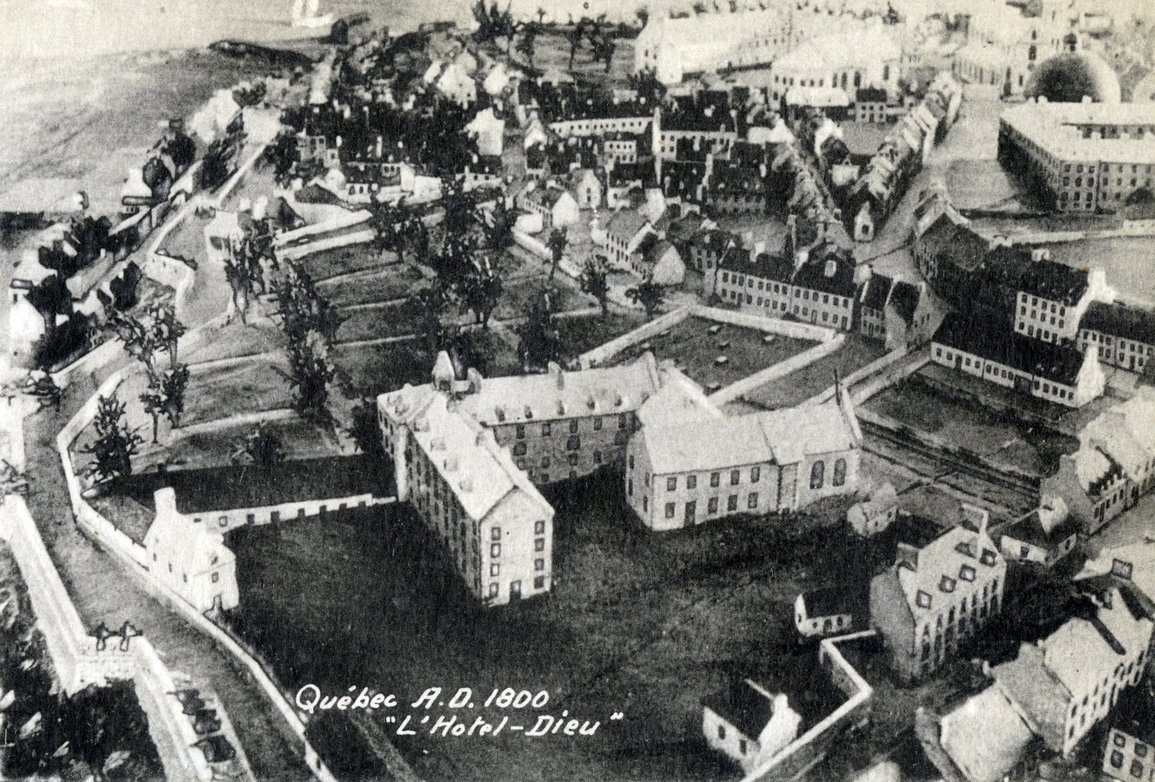
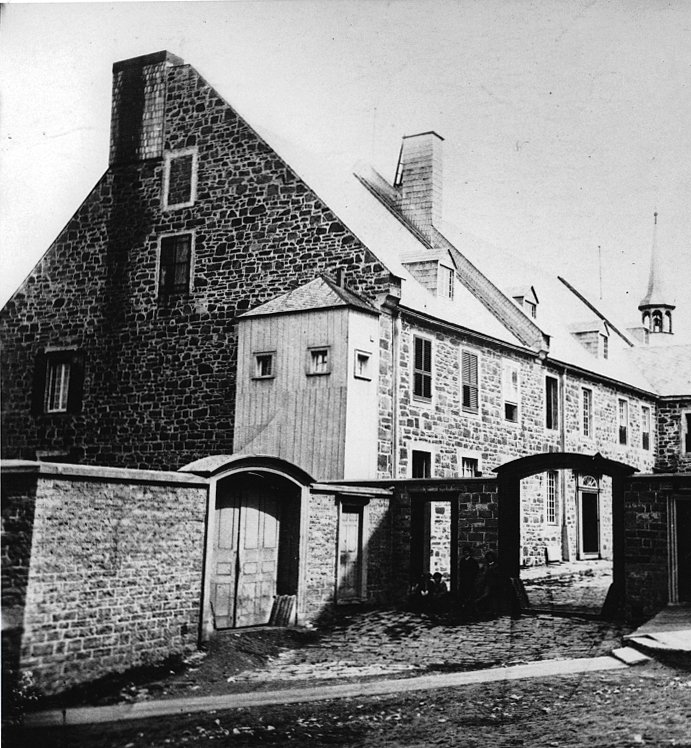
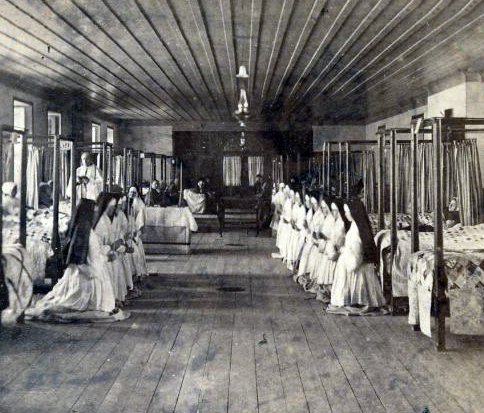
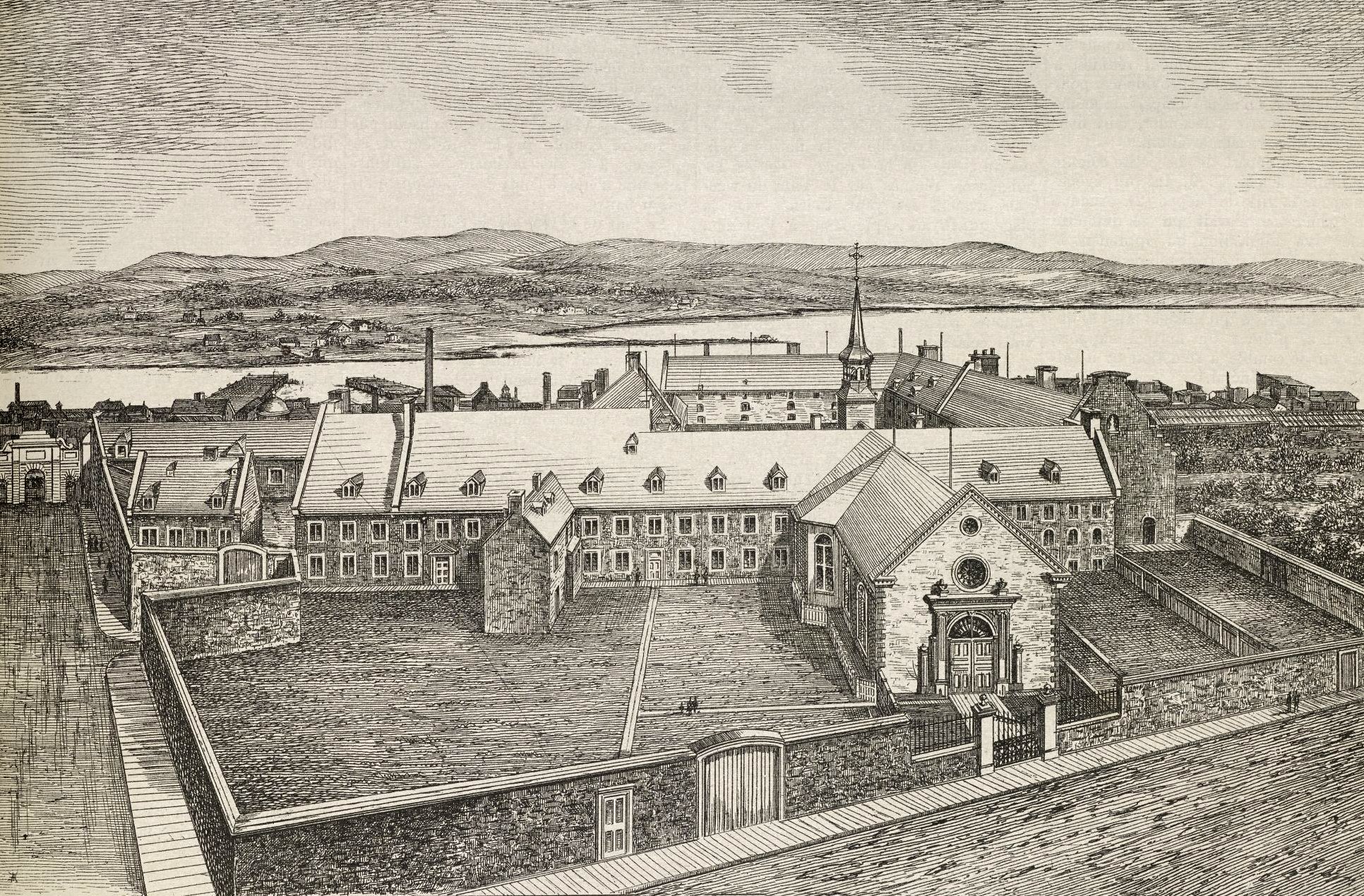
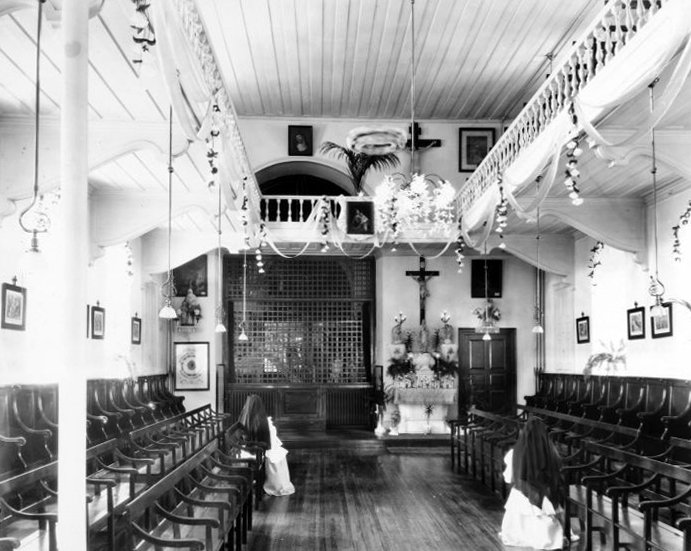
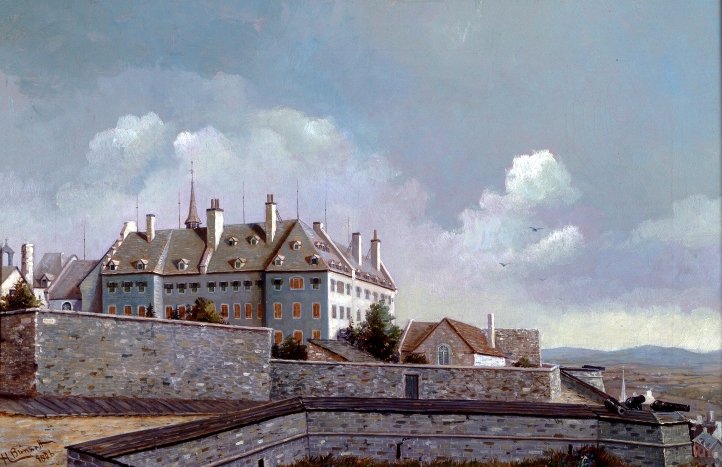
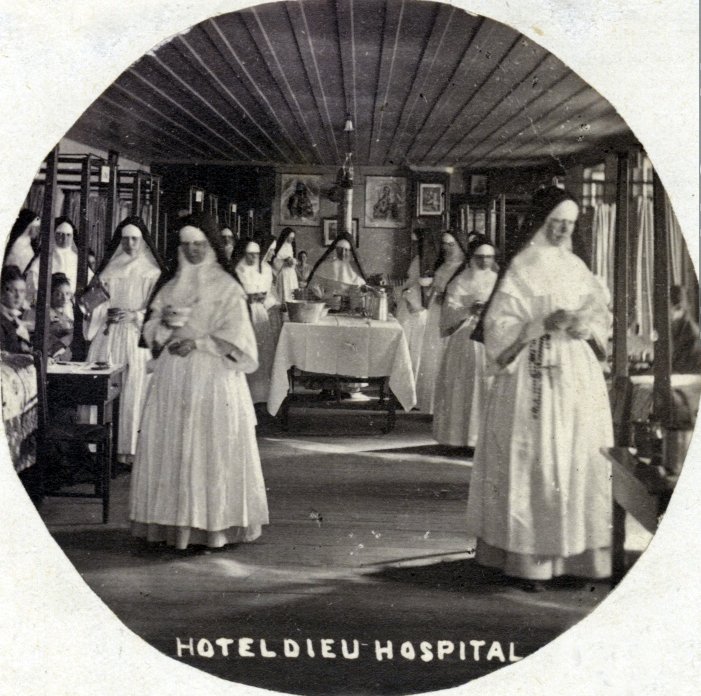
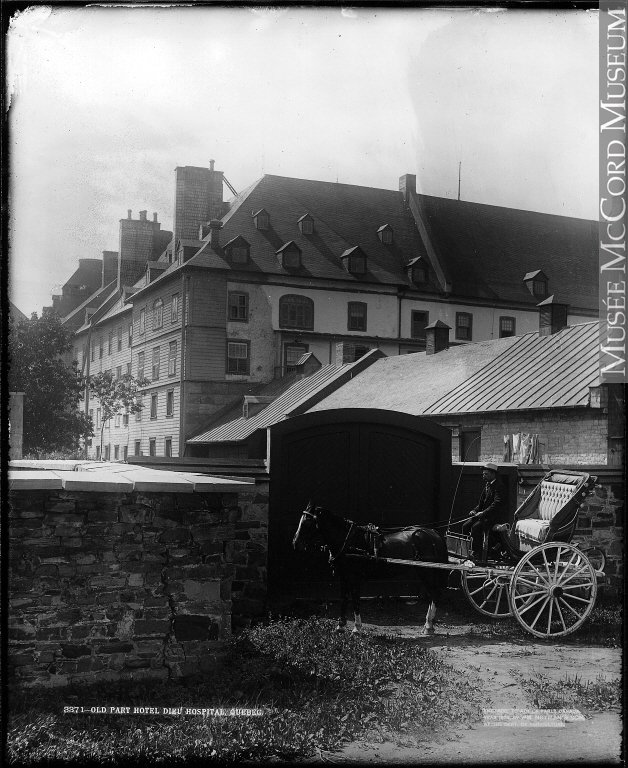
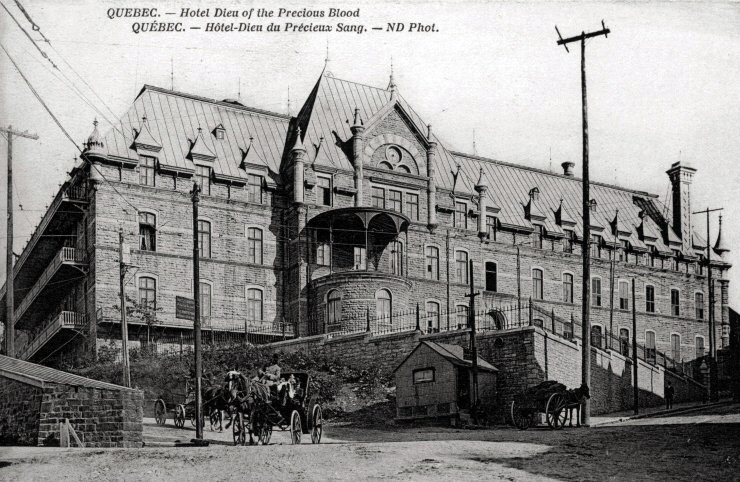
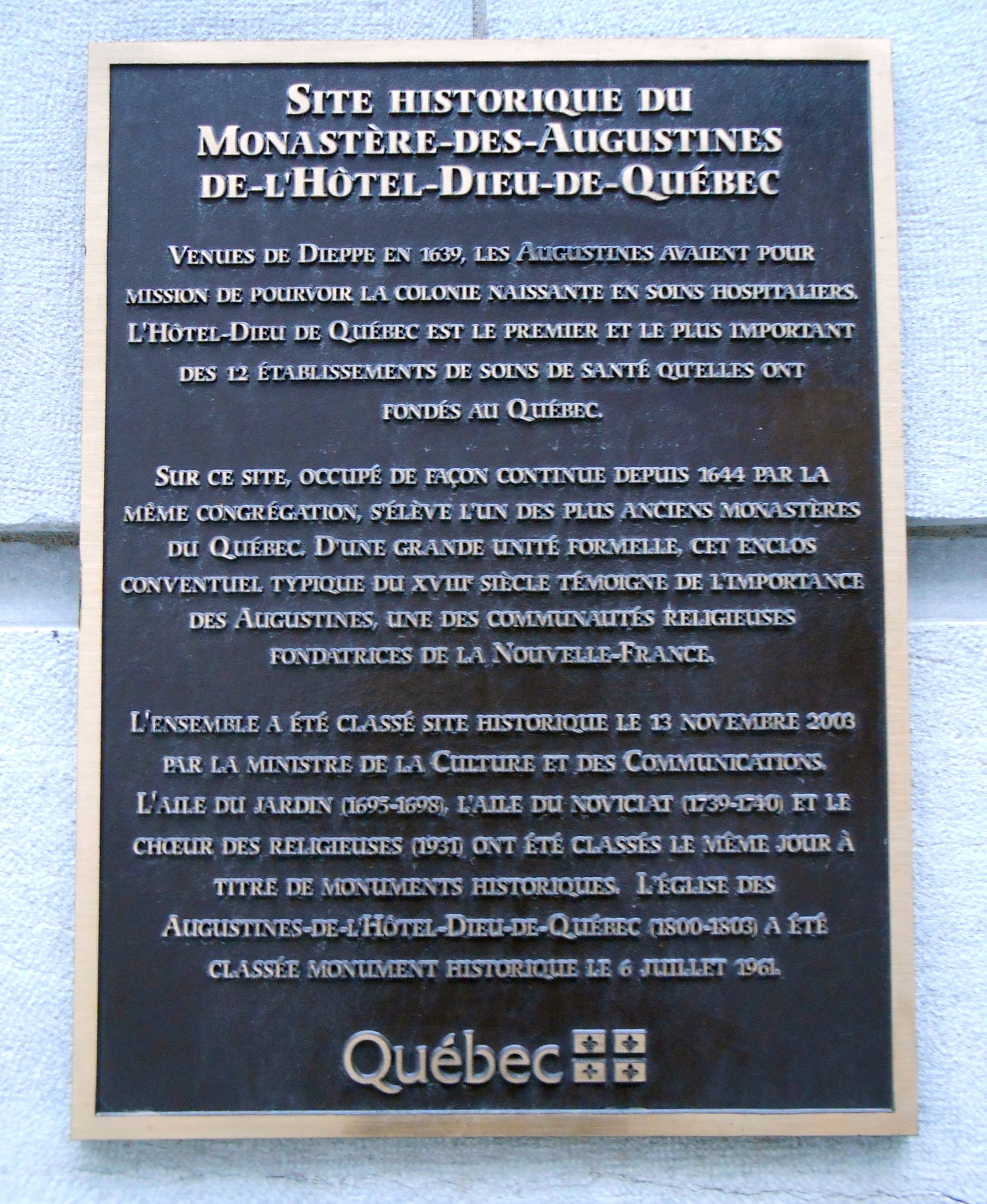
The Hôtel-Dieu in Montréal
The Hôtel-Dieu in Montréal was founded by the Société de Notre-Dame de Montréal, then the proprietor of the island of Montréal. It was funded by Angélique Faure de Bullion and placed in the care of Montréal co-founder Jeanne Mance, widely considered to be the first nurse in New France. The mission of the Hôtel-Dieu was to care for the sick who could not afford treatment elsewhere. That included French men and women, as well as their indigenous allies.
Construction of the hospital was completed in 1645, outside the fort palisades on Saint-Paul street near Saint-Sulpice [the historic site where the original hospital once stood is now the cours le Royer, where a commemorative plaque has been installed]. The first hospital was a stone structure, measuring 60 feet by 24, commonly called "la maison de Mademoiselle Mance". Inside, there were 5 rooms: a kitchen, a room for Mance, a room for the servants, and a patient room with 8 beds (6 for men, 2 for women). In 1654, this building was replaced with a larger one. Mance returned to France to get more funding for the hospital, and also to recruit nurses to work there. In 1659, three nuns from the Hospitalières de Saint-Joseph in La Flèche arrived to lend a hand: Judith Moreau de Brésoles, Catherine Macé et Marie Maillet.
"Montréal de 1645 à 1652." The sketch shows the level of development of housing in Montreal from 1645 to 1652 with, among other things, the location of the first cemetery and the Hôtel-Dieu. By A. Léo Leymarie (Archives de la Ville de Montréal).
"Plan of the Hôtel-Dieu in Montreal before the fire of 1695," illustration by Gédéon de Catalogne (Archives de la Ville de Montréal).
Mance ran the hospital until her death in 1673. After her death, the Hôtel-Dieu was managed by the Sulpicians on an interim basis for about five years, before being handed over to the congregation of the Hospitalières de Saint-Joseph.
The hospital was ravaged by fire three times between 1695 and 1734. In February of 1695, flames completely destroyed the building. A larger hospital was rebuilt before the end of that year. In 1721, another fire consumed the Hôtel-Dieu. This time, it took almost three years to rebuild. In October of 1734, yet another fire occurred, destroying the hospital and its archives, including the writings of Jeanne Mance. It took a decade to rebuild. The Hôtel-Dieu was the only hospital in operation in Montreal for almost two centuries.
After the British conquest in 1760, the Hôtel-Dieu continued to operate, staffed by both French and English doctors. In 1821, a second hospital was finally opened: the Montreal General Hospital. Most English-speaking doctors and nurses moved to this hospital, while the Hôtel-Dieu remained a French institution.
"Hôtel-Dieu, Montréal, 20 July 1829." Watercolour by James Pattison Cockburn, showing rue Saint-Paul from rue Saint-Sulpice looking east (Library and Archives Canada).
In 1861, the Hôtel-Dieu was rebuilt on "the land of Providence" near Mont-Royal, away from the crowded and polluted town centre. The size of the original property was immense. Today, it would extend from Sherbrooke street to Jean Talon street in length, and measured two arpents in width, bounded by St-Laurent boulevard on the east. The original building still stands today at the corner of avenue des Pins and rue Saint-Urbain. It housed a monastery, a hospital, an orphanage and a domed chapel. The remains of Jeanne Mance were transferred to the new site, buried in the crypt under the chapel. Parts of the original stone wall that surrounded the hospital also still exist. Today, the hospital is part of the Centre hospitalier de l'Université de Montréal (CHUM), a group of three university teaching hospitals. With the opening of a CHUM megahospital in 2017, the Hôtel-Dieu was slated for closure. Though it no longer functions as a regular hospital, permanent closure was delayed due to the Covid-19 pandemic. The hospital currently stands as a testing site. Also onsite is a historical museum, Le musée des Hospitalières de l'Hôtel-Dieu de Montréal.
Image Gallery: Hôtel-Dieu in Montréal
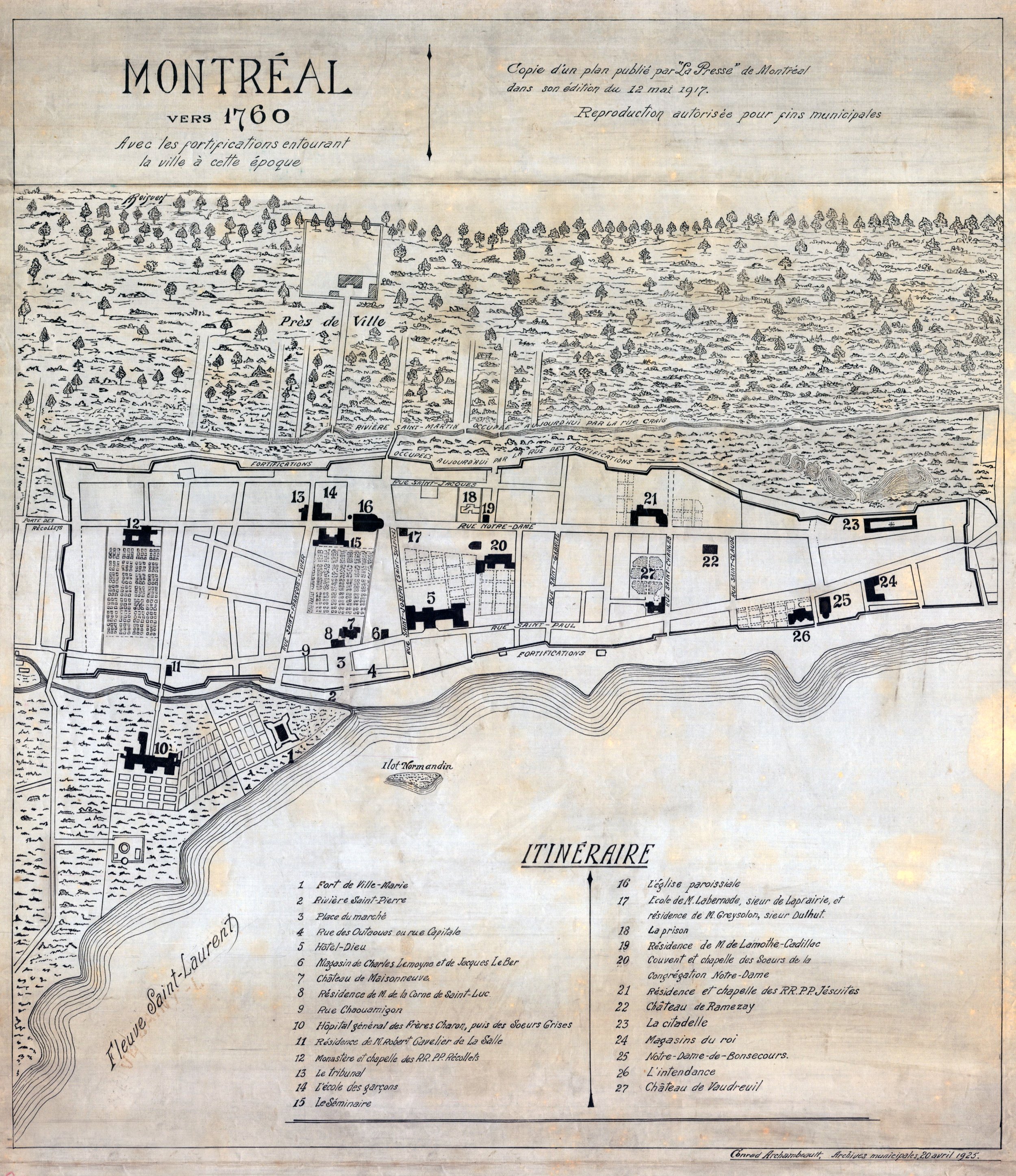
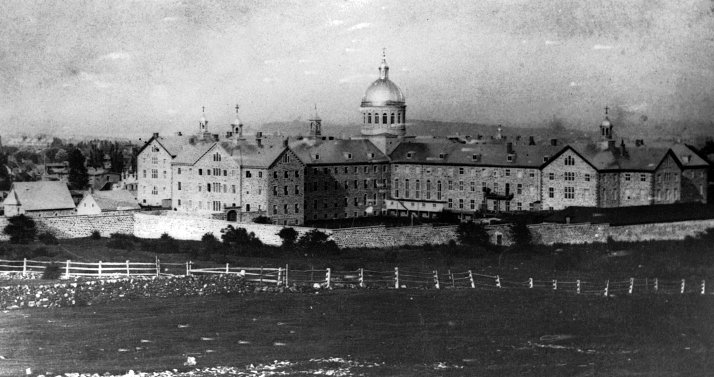
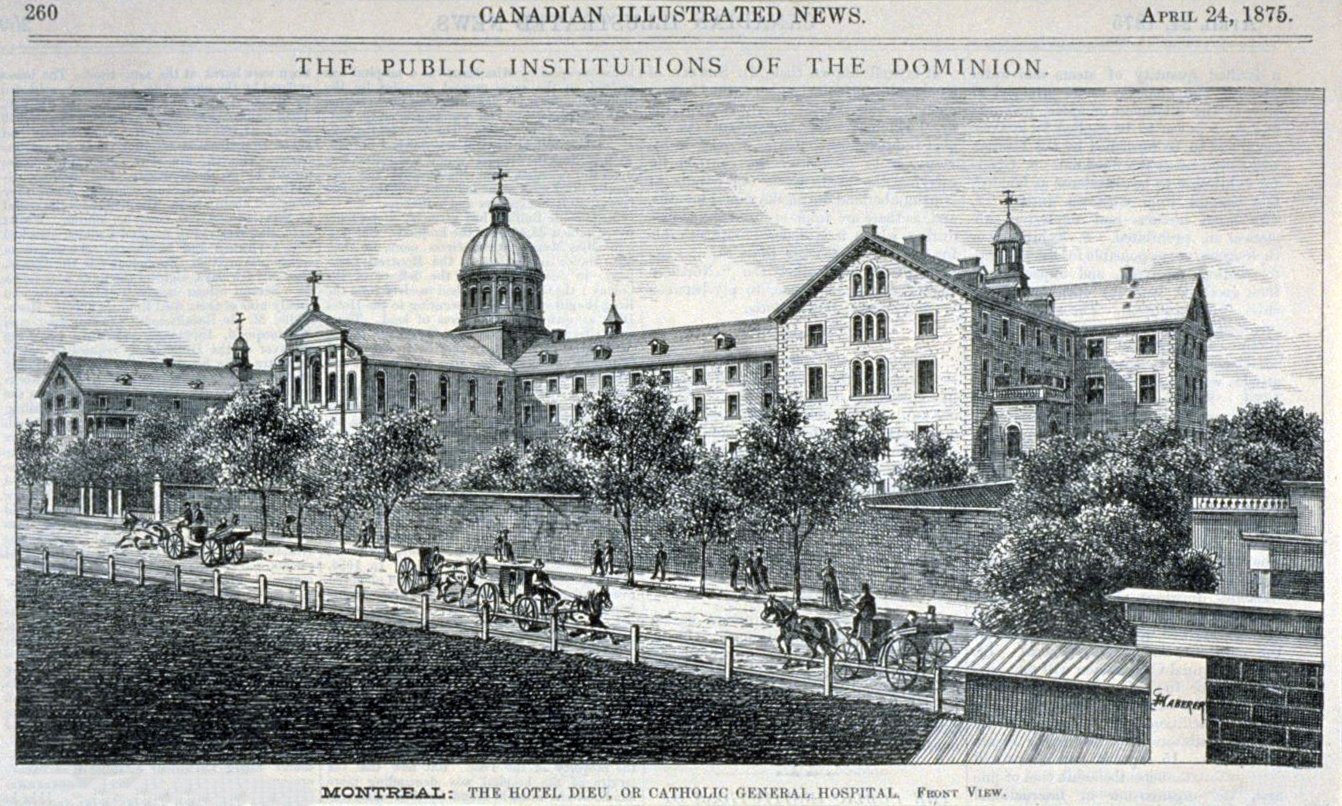
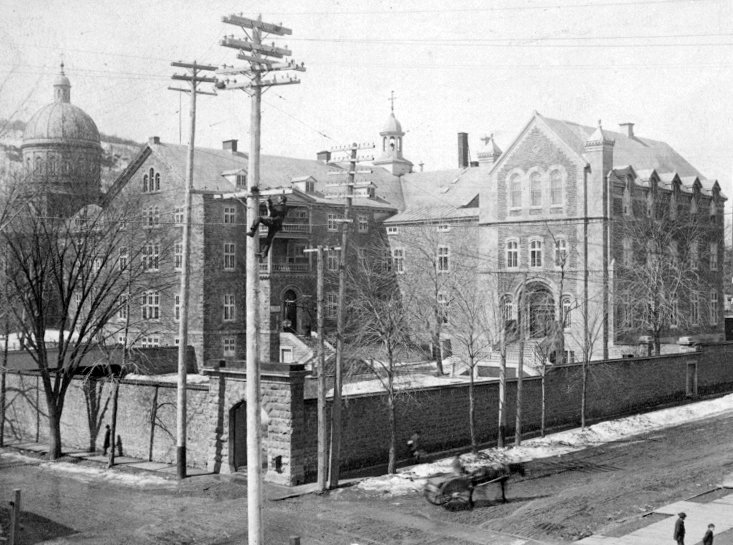

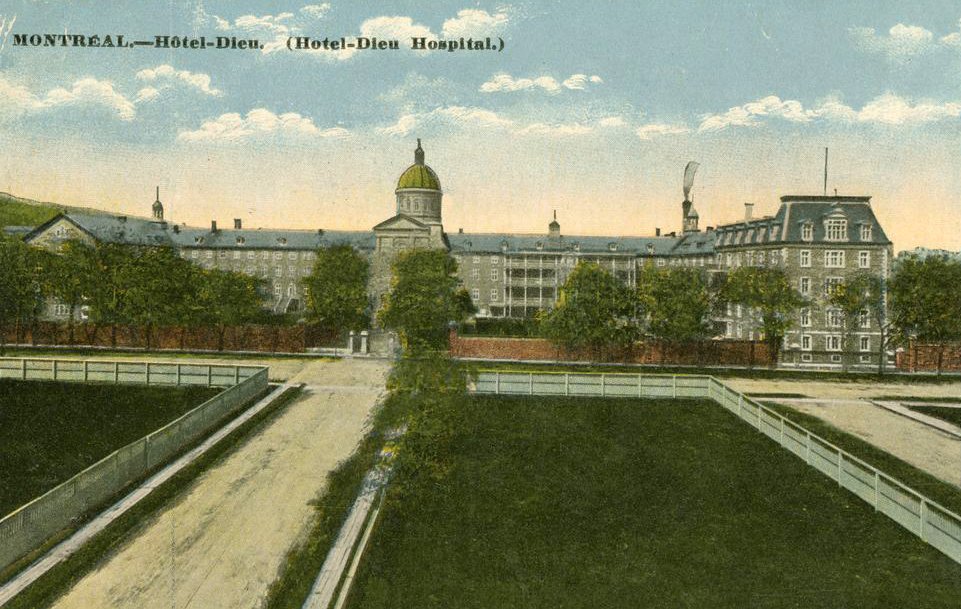
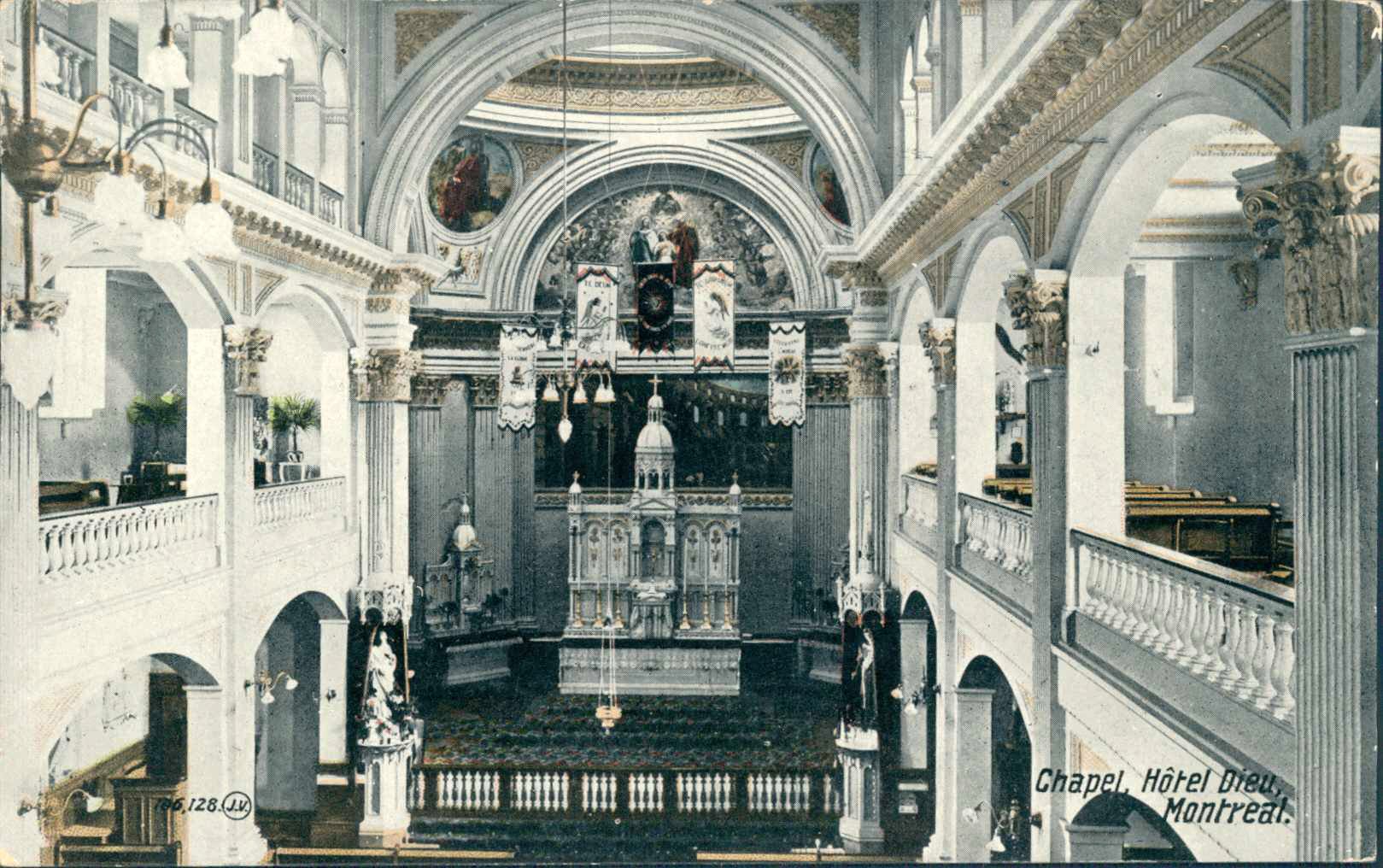
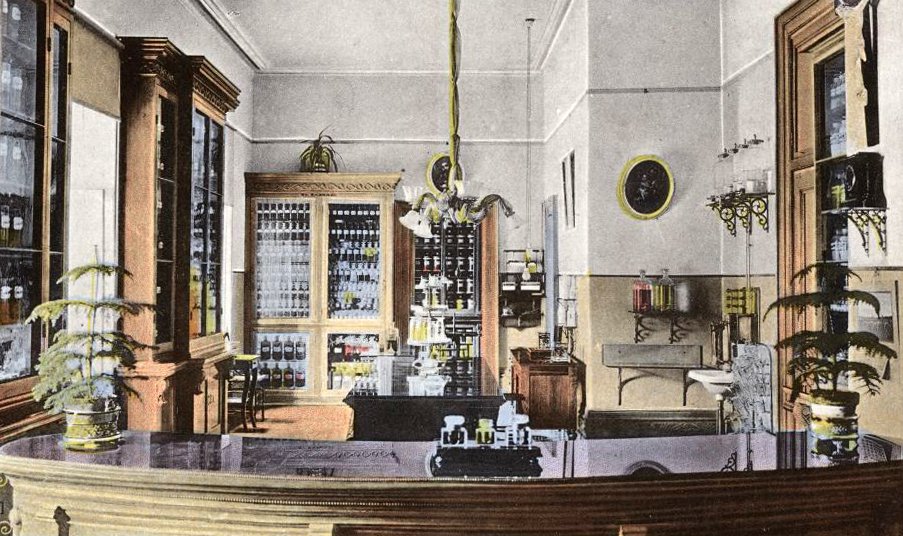

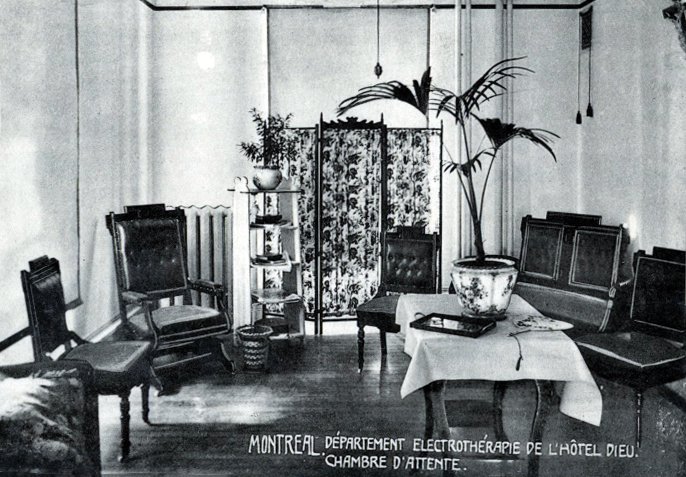
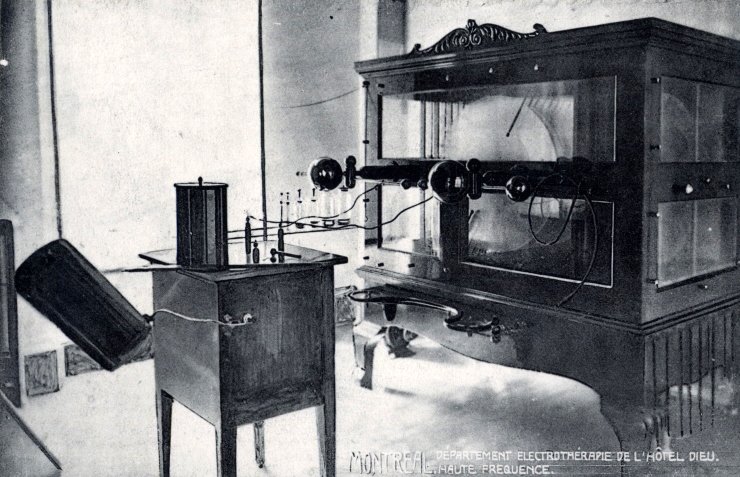
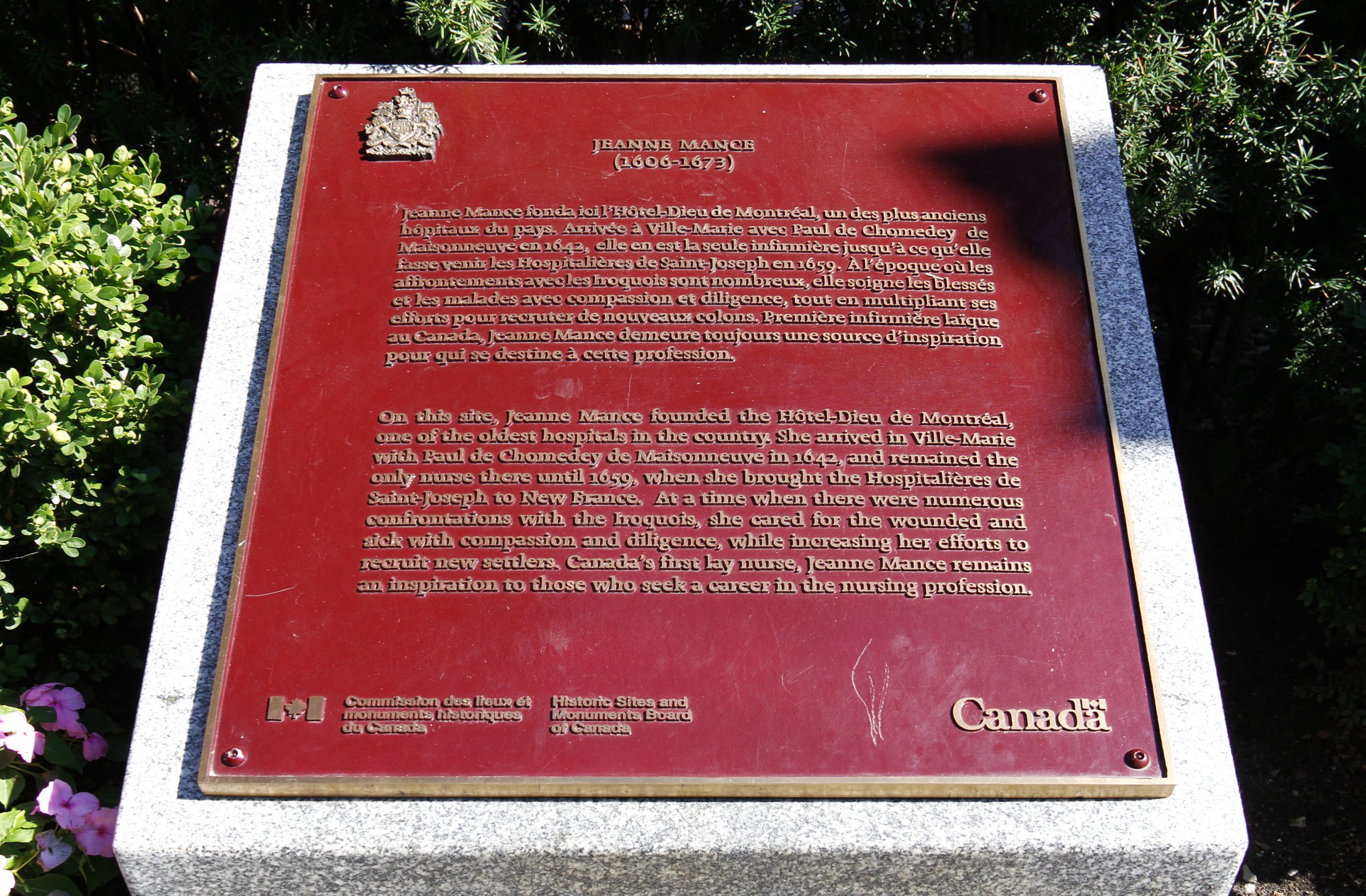
Who was admitted to the Hôtel-Dieu?
The nuns accepted all patients into the hospital without requiring payment. People on the upper echelons of society generally resorted to professional medical care in their home. Those who could not afford medical care went to the Hôtel-Dieu, where they were treated, fed and housed for free. During times of war, many soldiers and sailors ended up in the hospital with wounds and injuries. Large numbers of military men disembarking at the port of Québec also went directly to the hospital, having caught illnesses during their long, cramped and often unsanitary voyage. Women did not go to the hospital to give birth; that was done at home, often with the help of a midwife. When they did go to the Hôtel-Dieu, it was normally due to accidents: burns, injuries or frostbite. Men suffered the same accidents, but to a larger degree due to the physical nature of their work (labourers, farmers, fishermen, etc.). Most of the population was also hit with seasonal illnesses, such as the flu and bronchitis. And then there were the epidemics that ravaged the colony, such as smallpox, tuberculosis, typhoid and cholera. Most of these victims ended up in the hospital. Lastly, a large proportion of the patient population were the elderly who could not be cared for at home.
"Ward, Hôtel-Dieu Hospital, Montreal, QC," 1911 photo by William Notman & Son (McCord Museum).
Enjoying our articles and resources? Consider showing your support by making a donation. Every contribution, no matter how small, helps us pay for website hosting and allows us to create more content relating to French-Canadian genealogy and history.
Thank you! Merci!
Sources and further reading:
Casgrain, H. R., Histoire de l'Hôtel-Dieu du Québec (Québec : Léger Brousseau, Imprimeur-Librairie, 1878), 612 pages.
Mondoux, Maria, L'Hôtel-Dieu, premier hôpital de Montréal : 1642-1763 (Montréal : unnamed editor, 1942), 418 pages.
Gagné, Peter, Kings Daughters & Founding Mothers: the Filles du Roi, 1663-1673, Volume One (Orange Park, Florida : Quintin Publications, 2001), 626-627.
Musée des hospitalières, "Historique" (https://museedeshospitalieres.qc.ca/historique/).
Répertoire du patrimoine culturel du Québec, "Inauguration de l’Hôtel-Dieu de Montréal par Jeanne Mance" (https://www.patrimoine-culturel.gouv.qc.ca/rpcq/detail.do?methode=consulter&id=27871&type=pge).
Rousseau, François, "Hôpital et société en Nouvelle-France : l’Hôtel-Dieu de Québec à la fin du XVIIe siècle", Revue d'histoire de l'Amérique française, 1977, 31(1), 29–47. Digitized by Érudit (https://doi.org/10.7202/303581ar).
Thériault, Michel, and Marcel Cadotte, "Hôtel-Dieu". In The Canadian Encyclopedia. Historica Canada. Article published February 07, 2006; Last Edited March 04, 2015. https://www.thecanadianencyclopedia.ca/en/article/hotel-dieu
Veilleux, Christine, "De Dieppe à la côte du Palais," Cap-aux-Diamants, 1989, 11–14. Digitized by Érudit (https://id.erudit.org/iderudit/7379ac).
Ville de Montréal, "Hôtel-Dieu de Montréal" (https://ville.montreal.qc.ca/siteofficieldumontroyal/hotel-dieu-montreal).

